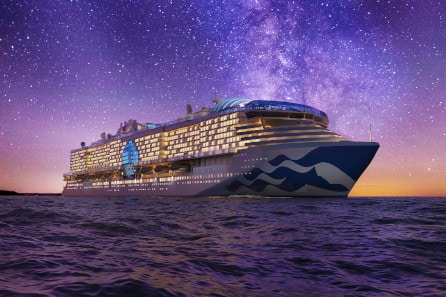Africa Vacation Trivia: 10 Historical Facts about Cape Town
An Africa vacation to Cape Town can be a journey through history. Its storied past has helped to shape this remarkable locale — the Western Cape's largest city — into a cruise destination that's much more than its beautiful beaches and wineries. Take a look at the historical events that led to Cape Town becoming the city it is today.
- Vasco da Gama and his crew first set foot on South African soil in 1497. Expanding on the discoveries of Portuguese explorer Batholemeu Dias in 1487, da Gama's ship arrived in what is now St. Helena Bay.
- In 1503, Antonio de Saldanha and his crew became the first Europeans to climb Table Mountain. They named it Taboa do Cabo (the Table Cape).
- In 1652, the Dutch East India Company established a resupply stop on the site that would become present-day Cape Town.
- Robben Island was used as a prison for more than 300 years. In 1658, Khoi-Khoi leader Autshumao began a war with Dutch settlers and was taken to Robben Island as a prisoner after losing the war in 1659. Later, Autshumao and another prisoner would become the only two people to ever escape the island. Over the centuries, prisoners — including Nelson Mandela — were held on Robben Island. The prison finally shut down in 1996, but you can still visit this UNESCO World Heritage Site on your cruise to Africa.
- The merino sheep, crucial to the Cape Colony's lucrative wool industry, were imported from the Netherlands in 1789.
- In 1806, the Battle of Cape Town transferred control to the British. Cape Town then remained a British colony until 1910, when it became part of the Union of South Africa.
- The Rhodes Memorial — a tribute to Cecil Rhodes, former prime minister of the Cape colony — was opened in 1912. You can visit the foot of Devil's Peak to see this memorial for yourself.
- The Kirstenbosch National Botanical Garden were established in 1913 along the eastern slopes of Table Mountain. This is another beautiful place to visit when you stop in Cape Town on your next Africa cruise vacation.
- The United Democratic Front (UDF) held its the first formal meeting at Mitchells Plain in 1983. An anti-apartheid collaborative, the UDF comprised delegates from 320 different groups, including women's organizations and trade unions, who pledged themselves "to a single nonracial and unfragmented South Africa."
- On Feb 11, 1990, Nelson Mandela walked out of his Cape Town prison after being held there for 27 years. A South African activist and leader in the elimination of apartheid, Mandela would go on to become the president of South Africa in 1994. Today, you can visit the landmarks from which he delivered his most famous addresses, such as Cape Town City Hall, where he spoke mere hours after being released from prison, or Parliament, where he gave his famous "100 Day Speech."
When you visit Cape Town, you have the opportunity to embrace the aspects of its history that have impacted both the city and the world. By learning more about Cape Town, you'll learn more about yourself — and you'll come back with a brand-new perspective.
Ready to explore Cape Town? Book your Africa cruise with Princess Cruises now.



